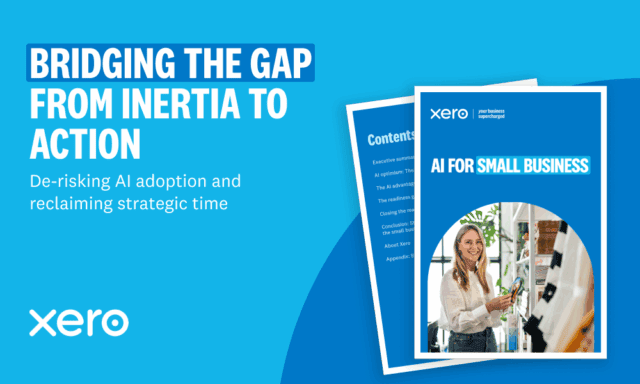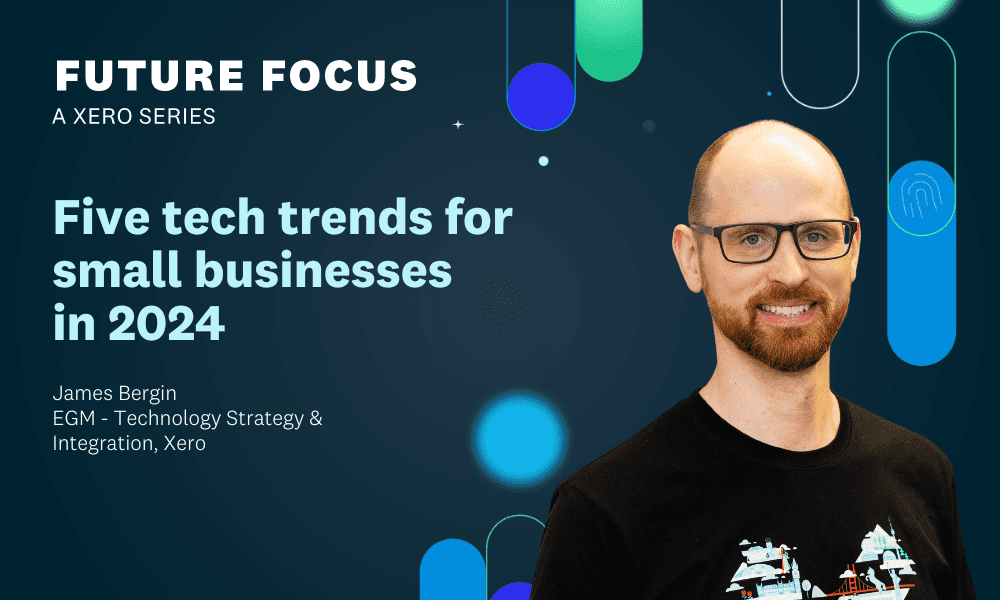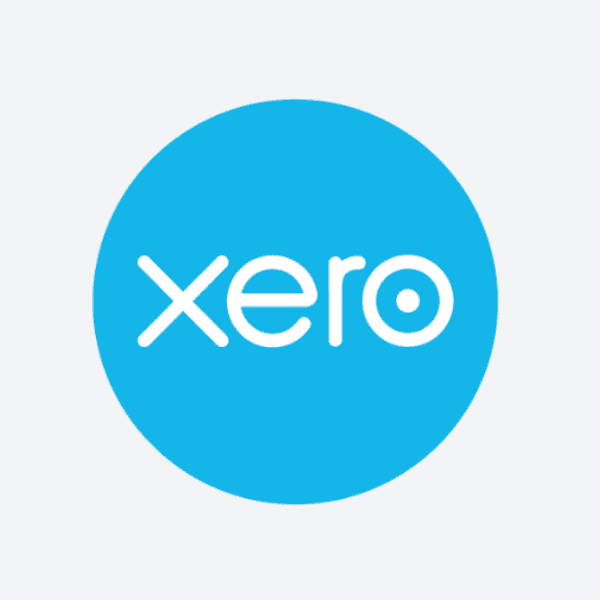
Five tech trends for small businesses in 2024
Last updated: Oct 18, 2025

In the early 2000s, accessing the internet was through a dial-up connection which could take anywhere from 30 seconds to a couple of minutes to establish a connection. In 2023, generative AI tools can generate poems, short stories and complex legal and medical documents in a matter of seconds.
The pace of technological change is accelerating and it’s reshaping just about every aspect of how we live, work, socialise and play. While Xero’s Future Focus research reveals small businesses are more optimistic, and even intrigued, about the potential of emerging technologies than doom and gloom, many wish there was more education and resources to navigate a rapidly changing world.
To help small businesses and their advisors plan ahead, I’ve looked at separating the hype from reality to uncover the top five technology trends that may impact the small business landscape in 2024.
Trend #1: The AI-augmented creativity boom
This year saw generative AI burst into the mainstream in what Axios’ Scott Rosenberg called the “most phenomenally successful act of rebranding in corporate history.” While language models are not new, the interactivity and accessibility of AI through tools like Stable Diffusion and ChatGPT signalled the biggest leap in the technology’s capabilities, helping businesses to create content easier and faster.
We’ve only scratched the surface of this technology and in 2024, while the hype might fade, more practical applications are likely to emerge relating to creative content, generative design and engineering. Currently, ChatGPT and other AI models are great at generating content from millions of examples of past works. But for creators or engineers looking for innovative solutions, you don’t want content that mimics an existing concept.
Next year we could well see a ‘creativity boom’ where AI models go beyond statistical similarity and come up with new designs or products that are far better than the ones that exist today. Continuing in its ability to augment (rather than replace) human intelligence, AI could truly become the co-pilot for creators, enabling them to set up the requirements such as manufacturing processes, loads and constraints, and then filtering a myriad of new ideas and design options.
Prompt engineering and the ability to work effectively with these AI models will continue to grow in importance and as a skill-set across all industries. The drawbacks around misinformation, copyright and bias will also need to be worked through in 2024, as the push for the commercially safe, transparent and ethical use of these AI systems comes to a head in jurisdictions around the world.
Trend #2: The rise of the augmented, conversational UI
When I first started using ChatGPT, what struck me was the change in the interaction mode. The promise of conversational user interface (UI) has been around for a while with Siri and Alexa, but it’s always been functional and instructional, never truly conversational. ChatGPT is not a better search engine — especially when it hallucinates answers — but it is becoming one of the first real, usable and intelligible chatbots.
In 2024, large language model-powered tools like ChatGPT will continue to revolutionise human-computer interaction, through the rise of API-enabled, conversational chatbots that are able to interact with customers. The ability for chatbots to have real-time conversations in any language to customers 24/7 and perform certain tasks at their request will unlock new opportunities for small businesses looking to handle customer inquiries or expand into new markets.
Google and Microsoft will continue to enhance their generative AI-powered capabilities and, if you believe the rumours, Apple could release its generative AI technology on the iPhone and iPad in late 2024. The new features could improve how Siri and the Messages app can field questions and auto-complete sentences, mirroring recent changes to the AI-enhanced overhaul of Amazon’s Alexa.
Trend #3: The metaverse finds a new source of power
The idea of living and working entirely in a virtual world as so often shown in the movies still feels fanciful, even comical. Yet advancements in 2023 in the technologies that underpin the concept of a metaverse, particularly in augmented and virtual reality, and significant investment by large technology companies — including the mixed reality ‘spatial computer’ headset by Apple — have brought some aspects of this ambitious vision closer to reality.
Will it be the breakthrough technology of 2024? It seems unlikely to reach full maturity next year. But I’m reminded of Bill Gates’ sentiments that: “We always overestimate the change that will occur in the next two years and underestimate the change that will occur in the next ten.” So, writing off the entire concept of the metaverse because of its relative immaturity when compared to the promise from science fiction might be premature.
I believe that some incarnation of the metaverse will be the next iteration of the internet, providing immersive, blended and connected experiences for everything from entertainment to education to virtual community building, and that it will introduce new concepts of ownership of digital assets. Many of these concepts will continue to evolve and emerge in 2024, with more small businesses innovating and exploring this space as some have started to do already this year.
Where once internet connectivity was once the main constraining factor for the metaverse, battery technology has quickly become a crucial component for its success, in my opinion. In 2024, we are likely to see significant development in lighter, cheaper and more efficient batteries to power the next generation of smartphones and headsets, and that will be key to also unlocking more immersive, mixed reality experiences in our everyday, on-the-go lives.
Trend #4: Carbon accounting the next frontier for compliance
We’re well into the critical decade of climate action and pressure will begin to mount on governments and industries to reduce their carbon emissions to meet the IPCC’s 2030 deadline. At the same time, the release of the sustainability standards by the International Sustainability Standards Board (ISSB) could see reporting on carbon emissions no longer be optional for businesses.
The ISSB standards could very well bring in a new era of compliance and become the basis of accounting standards in 2024. To avoid being locked out of corporate supply chains or providing inaccurate and misleading information on environmental or sustainability practices, small businesses will need to ensure they are accurately calculating and tracking their carbon emissions each year.
The integration of carbon accounting software into existing accounting platforms will see carbon accounting become an extension of financial accounting and reporting practices for small businesses. Our global partnership with Sumday is helping to democratise carbon accounting and upskill accountants and bookkeepers to provide this service. Xero small business customers can also find apps like Cogo, Ecologi and Greenly in the Xero App Store, allowing them to harness the data in their Xero ledger to measure and report their carbon emissions.
Trend #5: The rise of the super ecosystem, powered by connectivity
Connectivity between new and traditional players within the payments ecosystem is bringing in a new era of digital payment experiences for small businesses. Today, it allows the real-time validation of e-invoices against government regulations and tax requirements, to help small businesses send bills over the internet and get paid faster. It also ensures the seamless transmission of data between banks and third-party providers, to enable instant access to financial information and services.
In 2024, global platforms like Apple, Amazon, Google and Microsoft will continue to make their products work better together. Why? Because people are tired of using lots of different apps for different things. They want everything in one place, working smoothly together. Rather than the rise of the ‘super-app’, we’ll see the power of the ‘super ecosystem’ — the interconnectedness of financial services that make it easier to pay bills, transfer money and manage finances together in one spot.
Digitally distributed technology, like blockchain and web3 platforms, could be building blocks for new payment innovations when coupled with concepts like self-sovereign/decentralised identity to help people share their identity and other data more securely.
Small steps to an exciting future
While some of these tech trends might take years (or even decades) to realise the full scope of their impact on the world, the first steps into that future are being taken now. And next year, it would be a good idea for small businesses and their advisors to continue to keep an eye on developments in these five trends, as they will no doubt play a major role in shaping the future themselves.





